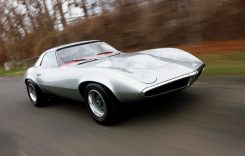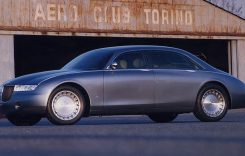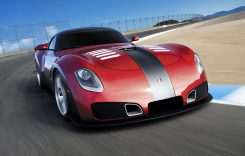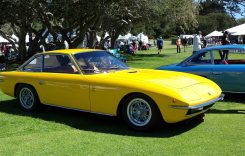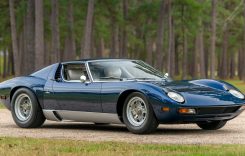Five years ago Yamaha bucked motocross convention with its curious reversed engine YZ450F. The Tuning Fork company isn’t completely divorced from tradition however, and makes another batch of updates for the 2015 YZ450F ($8590) giving it a more standard feel on track. Equipped with a carefully massaged, and still coil spring suspension-equipped chassis, Yamaha assimilates when needed, yet continues to differentiate itself from the competition.
Last season engineers gave the 450 its first major overhaul, highlighted by a reworked chassis and revised engine top end and intake configuration. This year the YZ450F sees subtle tweaks designed to boost rider feel and control during motos.
To accomplish this engineers added a degree of chassis flex. Specifically less rigid fork outer tubes were fitted that house stiffer fork springs (0.50 kg/mm). The lower engine mounts are smaller and now fabricated from steel as opposed to aluminum. Handling is further enhancement by the fitment of Dunlop’s newer spec Geomax MX52 intermediate terrain tires.
“Early in the morning I felt that it was smooth [the track] and it danced around a lot and I couldn’t really control where the bike needed to go,” says MotoUSA’s lady test rider and three-time X Games Gold Medalist, Vicki Golden, after her first few laps on the YZ. “Later in the day it got rougher and the bike worked a lot better. With the smaller bumps, and even the bigger ones, it just tracked and seemed to handle better when it was rougher.”
Contrary to the other Japanese brands, Yamaha sticks with its proven KYB-sourced spring fork rather than air suspension. This simplifies the pre-ride checklist by eliminating the extra steps required (checking/adjusting fork air pressure) to get your machine ready to moto. It’s also worth noting that the air box gets road racing-style and tool-less 1/4 turn Dzuz fasteners, which help make filter maintenance less of a hassle.
(Top) Both of the lower engine mounts of either side of the engine are smaller and now fabricated from steel instead of aluminum. This change allows for more favorable chassis flex characteristics. (Center) The airbox now features 1/4-turn Dzuz fasteners allowing the rider to service the air filter without tools. (Bottom) The fork outer tubes have been tweaked for added flex. Engineer’s also fitted stiffer fork springs to improve the balance of the chassis entering corners.

“Comparing the suspension to the air fork stuff out here [at SoCal’s Cahuilla Creek] it was awesome,” says Golden. “The air fork stuff really takes away the smaller bumps, but I feel it still needs some work to get the bigger bumps handled better. Out here we had big bumps — high speed braking bumps, almost any kind of bumps you can really think of and it seemed to handle just great on all the initial impacts.”
Although the spring fork doesn’t offer the extreme range of adjustment as an air unit, it’s less complicated to set-up (provided you don’t have to alter the physical spring rate). And once a good setting is achieved, you barely have to touch a screwdriver. Another benefit is the familiar and consistent damping feel regardless if you’re on the first or last lap of the day, which ultimately breeds greater confidence. We also love the YZ fork’s plush and exceptionally balanced feel.
At the back end, the shock spring (5.7 kg/mm) offers a large adjustment window to obtain optimum sag setting (105mm) for Golden’s slim 145 pound physique, as well as my heavier 180-pound frame — with YZ engineers having targeted the bike specifically for riders of my weight. Another plus is the shock preload collar’s easy accessibility making sag adjustment a snap. Still Golden was completely satisfied with the heavier rider-friendly settings.
“It did kind of kick a little bit on the more downhill stuff and the front end feels a little bit heavy to where I can’t sit too far forward or the front end gets a little finicky,” she says.
Because of its packaging, the reversed engine Yamaha offers a different feel ergonomically. While it has a flat seat, the bike is thicker through the mid-section and forward shroud area.
“I felt like my knee wasn’t even touching the seat,” says the 5’6” Golden in reference to the shape of the seat and integrated underneath 2.0-gallon plastic fuel cell. “I was gripping more where the plastic is. I couldn’t grip it to save my life. After a little bit I got more used to it. I felt a lot better afterwards. But initially it was really slippery and hard for me to hold on.”
While the cockpit of the latest YZ iteration is slimmer and more traditional than past years, it still takes time to get comfortable especially if you’re hopping from a different brand. Thankfully, the offset of the ProTaper handlebar can be modified via its smart four-position top clamp. Still it does have some unique handling quirks, as Vicki reveals:
YZ450F Suspension Settings
Fork
Compression: 10 (Turns out)
Rebound: 10
Shock
Sag: 105mm
Low-Speed Compression: 12
High-Speed Compression: 1.75
Rebound: 12
“This is a bike you need to sit more neutral [on]. It’s not really my style. I like to be more up on the gas tank as far as I can—especially in the tight corners and the bike didn’t like to corner when I am sitting up there, so I had to scoot a little back and adjust myself and then it would corner a lot better.”
As Golden explains, the YZ responds best when the rider maintains a centered body position, resisting the urge to sit over the front of the bike. When done so it steers with precision and a high degree of predictability. Sure, it might not be as sharp steering as other bikes, but it does turn neutrally and never more or less than the rider asks of it.
(Top) The YZ450F’s unique ergonomics still require some getting used to says Golden. It is thicker through the mid-section and the radiator shroud area is a little wider than other 450s. (Center) The Yamaha favors a centered riding position when entering turns. When done so it corners well with a high-level of predictability. (Below) While the Yamaha’s coil spring suspension doesn’t offer as wide adjustment range as an air set-up, it offers superior action and balance especially if you fall inside of Yamaha’s 165-180 pound rider target weight.
Though the mechanics of the liquid-cooled engine are unchanged a lighter pull throttle tube as well as refreshed ECU fuel and ignition map calibration give it a fresh feel. The five-speed gearbox also got a minor tweak for improved shifting action. Lastly, Yamaha also went back to a smaller 48-tooth rear sprocket to make for a broader spread of power.
While we can’t say the engine is difficult to start, it does take a more deliberate kick than other 450s. Off idle the Yamaha offers a mild bottom end which helps the rear tire hook-up out of a corner. Keep the throttle pinned and the engine revs quickly delivering a fat and far-reaching spread of mid-range muscle which helps the YZ rocket off turns. Power continues to build smoothly all the way to high rpms. Overall it’s a broad, useable powerband that works well for novices and pros alike.
“It was smooth but for my riding style I like more of an aggressive bottom-end,” says Golden. “But that’s easy to fix with a simple sprocket change. [Ed Note: The character of the engine can also be modified via Yamaha’s GYTR Power Tuner available as a $279.95 accessory.] But the initial impact for me was a bit lagging compared to other 450s. Once you get up on the top-end—and the mid-to-top the thing rips, especially out here with loamy sand and uphills. In high-speed stuff it held its own and felt unbelievably fast.”
Although the blue bike still has some quirks, once you get up to speed, it’s a capable machine that through clever engineering helps you ride faster for longer, with less energy exerted. Riders who fall into the target weight range, will absolutely love its suspension and with the ease of its Power Tuner the engine can be set-up to virtually any kind of riding style and terrain.
